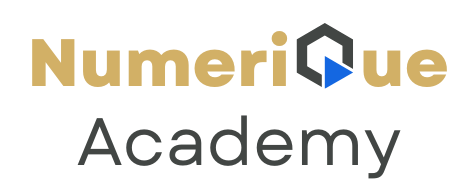Keyword research is one of the most critical components of a successful SEO strategy. It lays the foundation for all your content, helping you target the right terms that your audience is searching for. Whether you’re a beginner or looking to fine-tune your strategy, this guide will walk you through how to perform effective keyword research for SEO success.
1. Understand the Importance of Keyword Research
Keyword research is the process of finding and analyzing the terms people are using in search engines to find information, products, or services. It allows you to:
- Target the right audience with content that answers their specific questions.
- Improve your website’s visibility and rank higher in search engine results pages (SERPs).
- Stay ahead of your competitors by uncovering gaps in the market.
Without effective keyword research, even the best website content won’t reach its intended audience.
2. Identify Your SEO Goals
Before you start searching for keywords, you need to define your goals. Are you looking to drive traffic, generate leads, or boost sales? Different goals may require different types of keywords:
- Informational Keywords: These are terms people use when looking for information (e.g., “how to create a website”).
- Navigational Keywords: These are searches related to specific brands or websites (e.g., “Amazon homepage”).
- Transactional Keywords: These indicate intent to purchase (e.g., “buy running shoes online”).
By understanding the type of goal you’re targeting, you can focus on keywords that align with your objectives.
3. Use Keyword Research Tools
There are many powerful keyword research tools available, both free and paid, to help you find keyword ideas and analyze their potential. Some popular tools include:
- Google Keyword Planner: A free tool that shows search volume, competition level, and suggested bid prices for keywords.
- Ahrefs: A paid tool that provides keyword data and SEO insights, including search volume, keyword difficulty, and backlink opportunities.
- SEMrush: Another paid tool offering a comprehensive keyword research platform with in-depth metrics on keyword performance.
- Ubersuggest: A free tool by Neil Patel that provides keyword suggestions, search volume, and competition data.
These tools help generate keyword suggestions, estimate search volume, assess competition, and uncover long-tail keywords, which are less competitive but often highly relevant.
4. Analyze Search Intent
Not all keywords are created equal. Understanding search intent is crucial to choosing the right keywords for your audience. Search intent refers to the reason behind a user’s search:
- Navigational Intent: The user is looking for a specific website or page.
- Informational Intent: The user is seeking information on a particular topic.
- Transactional Intent: The user is considering making a purchase or taking a specific action.
Focus on keywords that match your content’s purpose. For instance, if you are offering a product, focus on transactional keywords. If you’re providing an educational resource, informational keywords should be prioritized.
5. Consider Long-Tail Keywords
Long-tail keywords are longer, more specific search queries that usually have lower search volume but are much less competitive. For example, “best vegan skincare routine for dry skin” is a long-tail keyword compared to “vegan skincare.”
The benefits of targeting long-tail keywords include:
- Lower competition: Less competition means a better chance of ranking high.
- Higher conversion rates: Long-tail keywords often show more specific intent, which leads to higher conversion potential.
You can find long-tail keywords by brainstorming specific questions related to your industry or using tools like Ubersuggest and Answer the Public.
6. Analyze Keyword Metrics
Once you have a list of potential keywords, it’s essential to analyze their metrics to determine their effectiveness. Some key metrics to focus on include:
- Search Volume: The number of times a keyword is searched each month. Higher search volume indicates higher potential traffic.
- Keyword Difficulty: A metric indicating how hard it will be to rank for a keyword based on the competition. Generally, keywords with high search volume also have high competition.
- Cost Per Click (CPC): If you’re running ads, this metric shows the average cost you would pay for each click on an ad targeting that keyword. High CPC indicates strong commercial intent.
- Click-Through Rate (CTR): The percentage of users who click on your link after seeing it in search results. A higher CTR indicates the keyword is attracting quality traffic.
Balancing these metrics will help you select keywords that offer the best chance of ranking while aligning with your business goals.
7. Focus on Content Relevance
Keyword research is not just about finding the most popular or competitive keywords; it’s about finding the most relevant ones for your business. Make sure the keywords you target align with the content you’re creating. It’s essential to address the specific needs or pain points of your audience through your content.
To enhance content relevance:
- Use keywords naturally within your content.
- Provide comprehensive, useful information that satisfies the search intent behind the keywords.
- Don’t overstuff your content with keywords (known as keyword stuffing), as it may negatively affect your ranking and user experience.
8. Monitor and Refine Your Strategy
Keyword research is an ongoing process. The digital landscape is constantly changing, and so are the terms people use in search. Regularly track your rankings and analyze how your keywords are performing. Tools like Google Analytics and Google Search Console can help you monitor your traffic and keyword performance.
Based on this data, refine your strategy by:
- Updating or expanding your existing content.
- Removing or replacing keywords that aren’t performing well.
- Adding new keywords as trends evolve or new search queries emerge.
9. Utilize Competitor Analysis
Competitor analysis is an essential part of keyword research. By examining the keywords your competitors are ranking for, you can identify keyword opportunities and gaps. Tools like SEMrush and Ahrefs allow you to see the top-performing keywords of your competitors and their traffic metrics.
By understanding what works for your competitors, you can adapt your strategy and gain a competitive edge.
Conclusion
Effective keyword research is an ongoing and strategic effort that helps you connect with your target audience and improve your website’s visibility in search engines. By identifying the right keywords, understanding user intent, and optimizing your content accordingly, you’ll be well on your way to SEO success. Use the tools and techniques outlined in this guide to create a comprehensive and effective keyword strategy that supports your SEO goals.

